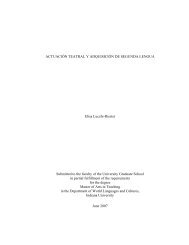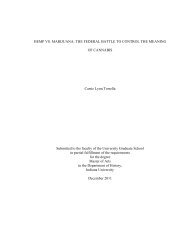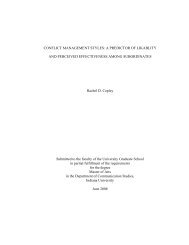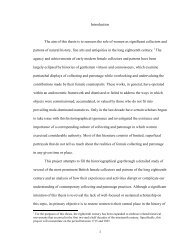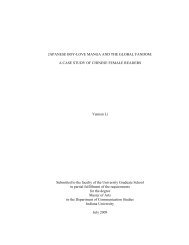Amir Saad Thesis final revision 03x - IUPUI
Amir Saad Thesis final revision 03x - IUPUI
Amir Saad Thesis final revision 03x - IUPUI
You also want an ePaper? Increase the reach of your titles
YUMPU automatically turns print PDFs into web optimized ePapers that Google loves.
ENDODONTICALLY TREATED TEETH<br />
6<br />
Endodontically treated teeth have usually lost a considerable amount of tooth<br />
structure due to caries, endodontic treatment, and placement of previous restorations.<br />
The root portion of a nonvital tooth is sometimes the only remaining foundation for a<br />
crown. The loss of a large portion of tooth structure makes retention of restorations<br />
problematic, and it increases the likelihood of fracture. The factors that affect the<br />
choice of post and core type depend on the type of tooth and amount of remaining<br />
coronal structure; the latter is the most important indicator for prognosis. 16<br />
Conventional root canal filling with or without a post and core adds little or no<br />
strength to the restored tooth. 17 Nonvital endodontically treated teeth showed more<br />
resistance to fracture than 1-mm ferruled teeth restored with a cast post and core<br />
system, a Composipost post and composite resin core system, or a stainless steel post<br />
and composite resin core system. 18<br />
Nonvital endodontically treated teeth lose their elasticity to a degree directly<br />
related to the reduction in the amount of dentin and are therefore more susceptible to<br />
horizontal and vertical root fractures; the latter is the most common type of root<br />
fracture in nonvital teeth. 19 Rosen and Frederick et al. 20, 21 demonstrated that nonvital<br />
teeth lose their elasticity due to decreased central blood supply and desiccation.<br />
Nonvital teeth also lose their elasticity as a result of root canal flaring, which is<br />
necessary for gutta-percha condensation. Helfer, Melnick and Schilder 22 found that<br />
there was no qualitative change in bound water when they compared vital to nonvital<br />
teeth. It was demonstrated that there was 9-percent less moisture in calcified tissues of<br />
nonvital teeth compared with vital ones. This process is irreversible even in a<br />
saturated atmosphere at body temperature. Laboratory testing has revealed similar<br />
fracture resistance in untreated and endodontically treated teeth. 23



